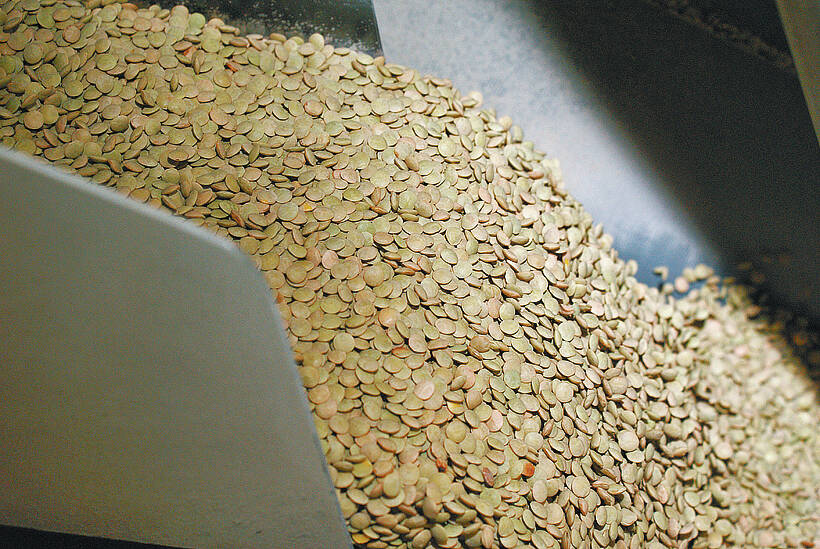A medium pepperoni and mushroom pizza can be purchased for about $10 in Western Canada, but the total value of the flour, cheese, meat and sauce is likely a fraction of that price.
Farmers frustrated by the discrepancy between natural gas prices and the cost of nitrogen fertilizer may want to keep that pizza analogy in mind, says a former fertilizer and agriculture industry executive.
“I empathize with growers in Manitoba, Saskatchewan, Alberta and the upper Midwest because nitrogen fertilizer is short in that area … but the market is the market,” said Don Pottinger, a former president of Saskferco who also worked for Simplot in Brandon and was a vice-president of Agco, a U.S. farm equipment maker.
Read Also

Green lentil market oversupplied
Farmers in Western Canada can expect price pressure on their new crop of green lentils, as the available supplies among the world’s major lentil-growing nations increase significantly.
Pottinger said natural gas is the key ingredient in producing nitrogen fertilizer, but like the pizza business, prices aren’t based on the cost of ingredients.
“You don’t walk in (to a restaurant) and say your ingredients are only 80 cents, (so) I’m going to give you 80 cents for your pizza,” said Pottinger, who is now chief executive officer of Northern Plains Nitrogen, a proposed $2 billion fertilizer plant in Grand Forks, North Dakota.
“It’s a world economy we live in, and nitrogen fertilizer is probably the best example of how global dynamics influence local pricing.”
The price of nitrogen fertilizer used to be tied to natural gas prices, but David Ripplinger, an agribusiness and applied economics assistant professor at North Dakota State University, said that ended when corn prices spiked in the mid to late 2000s.
“A decade ago, nitrogen fertilizer production was not a business you wanted to be in. They were selling at the cost of production, and a lot of (companies) were going out of business,” said Ripplinger, who wrote an economic feasibility study for the Northern Plains plant.
“The fertilizer folks (now) price to the market, so it has nothing to do with the cost of production.”
Farmers may not like the disconnect between natural gas and fertilizer prices, but obsessing about it and demanding lower prices won’t change anything, Ripplinger said.
“Knowing about their margins is just going to make you upset. There isn’t much you can do about it,” he said. “It’s just good economics. They’re not (here) to break even. They (exist) to make money.”
Pottinger agreed, saying corporations serve customers but also answer to shareholders.
“How would you like to address a shareholders meeting and say the price of (natural) gas is down…. We could sell what we produce for more money, but we don’t think we will.”
The proposed Northern Plains Nitrogen plant is, in some sense, a farmer protest against fertilizer prices. The North Dakota Corn Growers Association came up with the idea of building a plant to increase fertilizer supply in the northern Plains.
Pottinger said Northern Plains Nitrogen has most of the necessary permits to build the 2,400 ton a day plant and is in discussions with potential backers.
Farmers of North America is also raising capital for a farmer owned fertilizer plant called Project N. The proposed plant, in Belle Plain, Sask., will cost $1.8 billion to build.















